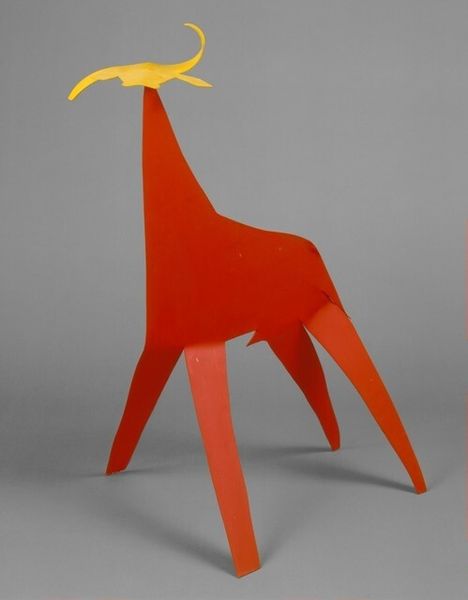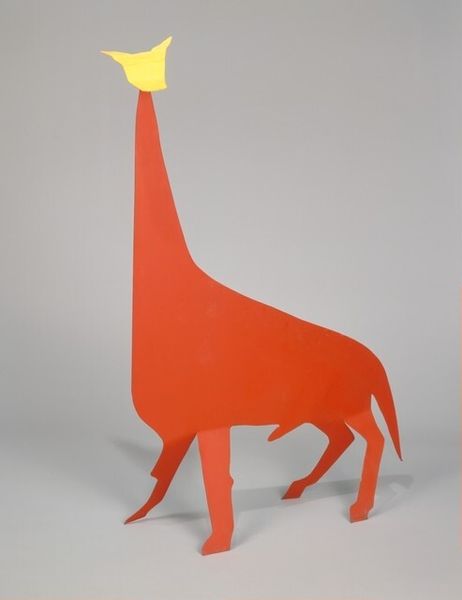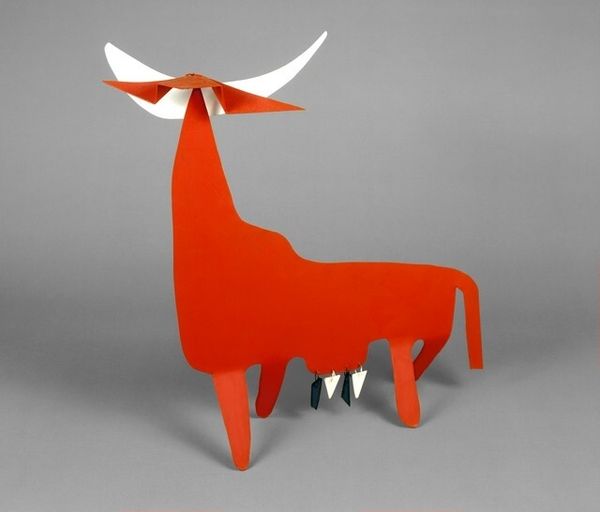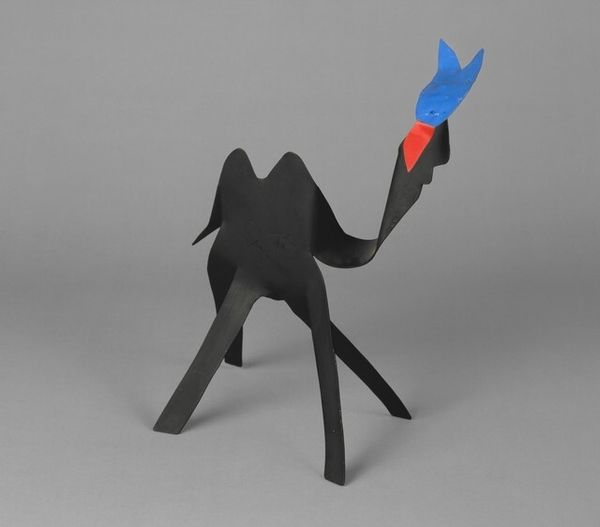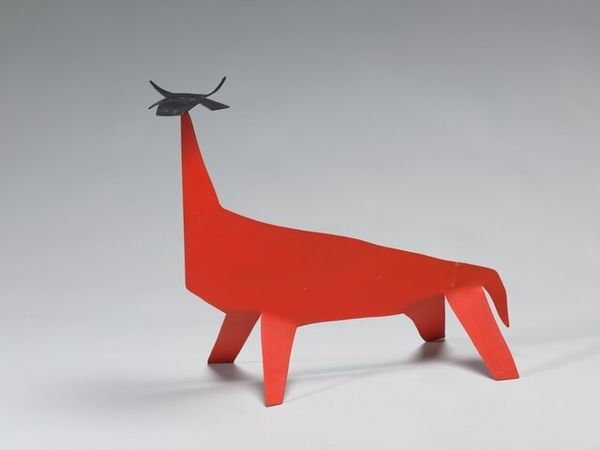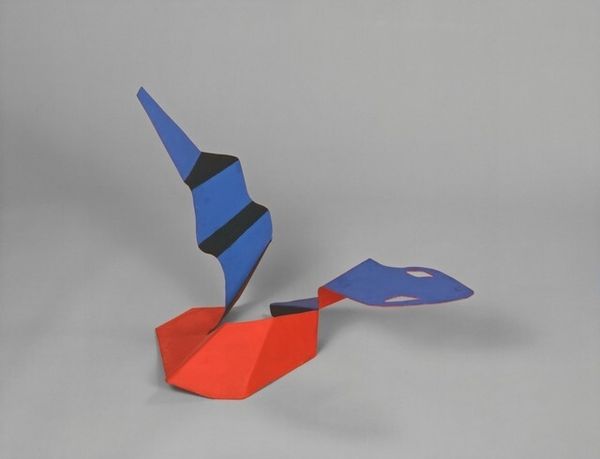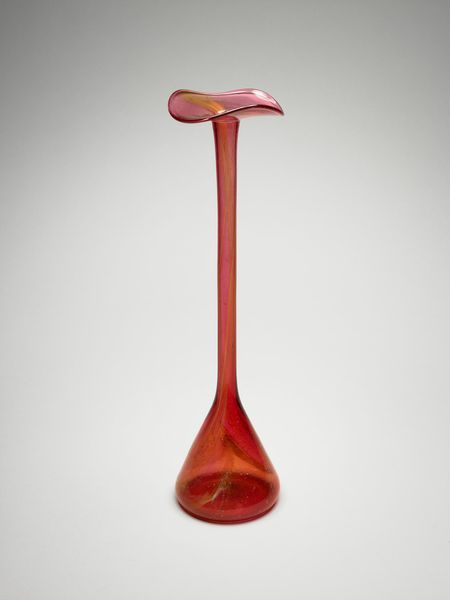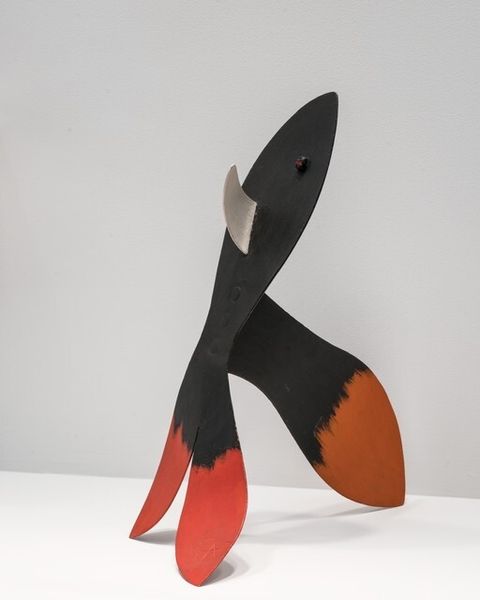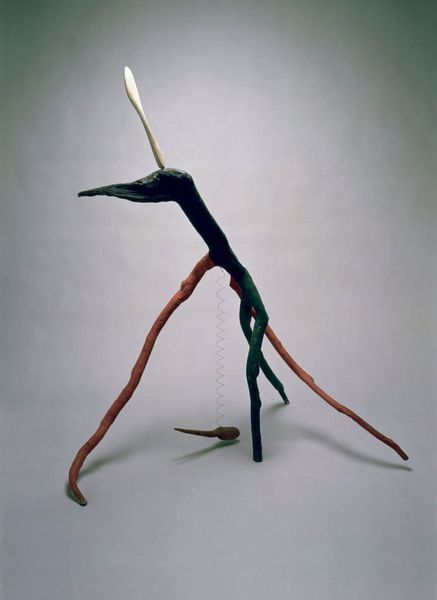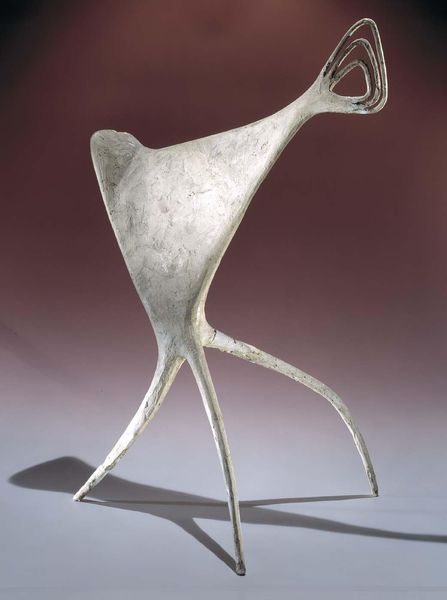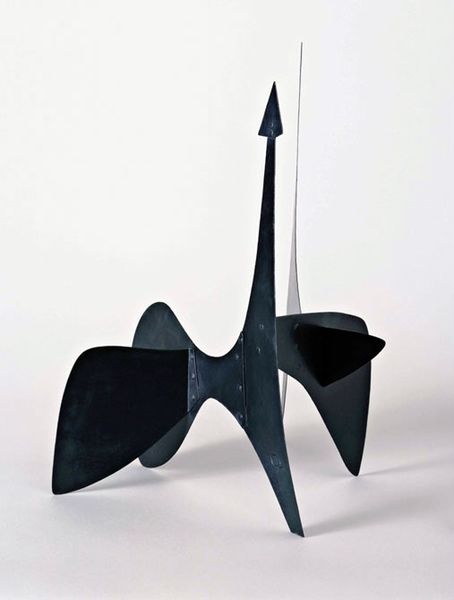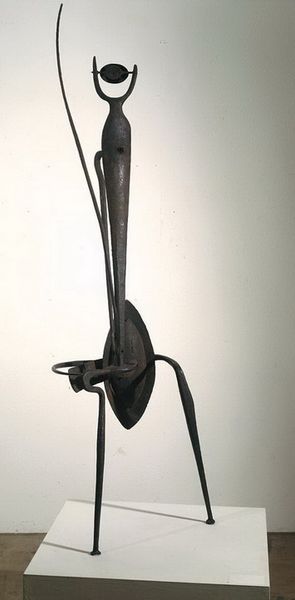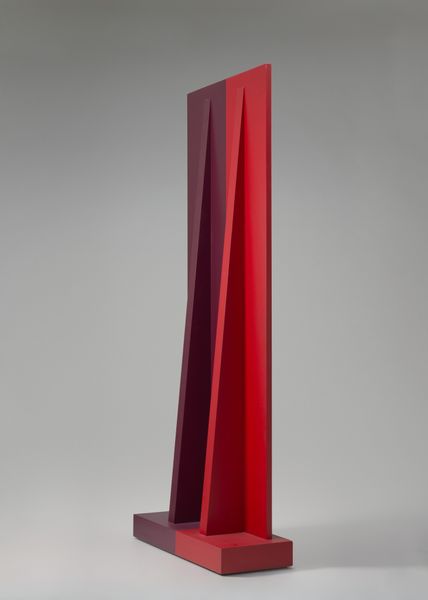
Dimensions: height: 101.92 cm (40 1/8 in.)
Copyright: National Gallery of Art: CC0 1.0
Curator: Standing before us is Alexander Calder's "Red and Yellow Bull with Blue Head," a metal sculpture crafted in 1971. Editor: It strikes me as incredibly playful, almost childlike in its bold simplicity. The stark orange and blue—a vibrant clash!—create an immediate, almost cartoonish impression. Curator: Calder, of course, radically altered the landscape of sculpture. The decision to render the bull in such vibrant hues subverts the traditional associations with power and virility. We might read the bull as a symbol, not of brute force, but of a joyful reinterpretation of masculinity. Editor: Yes, but let's not dismiss the formal aspects. The construction is remarkable. The use of simple geometric shapes to define the animal's form is brilliantly economical, almost minimalist, really forcing us to consider line, plane, and color above all else. How these shapes create movement within the still object is fascinating. Curator: Absolutely. And if we consider the social and political milieu of 1971, during the apex of second-wave feminism, Calder’s reduction of a traditional symbol of patriarchal power feels intentional. By transforming the bull into a whimsical, almost defanged figure, he invites a reconsideration of these outdated archetypes. He lets people playfully engage with an animal stripped from any harmful symbols. Editor: But do you think that takes away from the integrity of the piece to look so deeply into the cultural landscape of that time? While it might give the artwork new meaning in modern-day analysis, can it be said with certainty that was the artist's intention? I can see merit in approaching the artwork from either position. Curator: These works don't exist in a vacuum. By embracing those theoretical readings of this work we not only bring more value to it but invite audiences who otherwise might dismiss works by artists they may believe they have no connection to. We open a dialogue to intersectional analysis. Editor: Indeed. What's great about art is the different values different lenses provide it with. Curator: I couldn't agree more, the symbolism can give power to an art piece for future generations. Editor: A truly enriching dialogue—on art, gender, intention, and our constantly evolving ways of viewing the world.
Comments
No comments
Be the first to comment and join the conversation on the ultimate creative platform.
